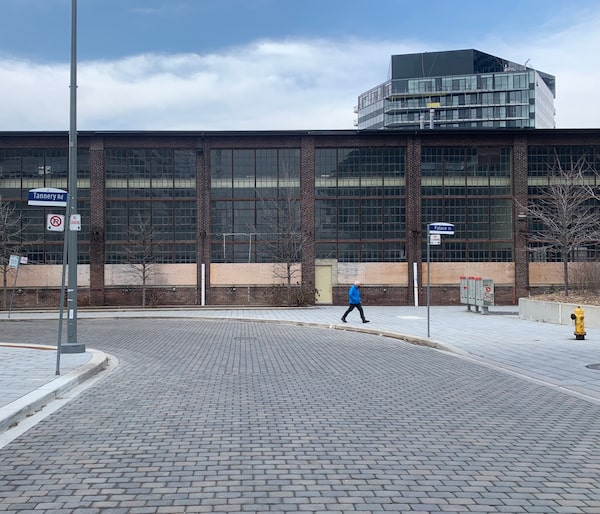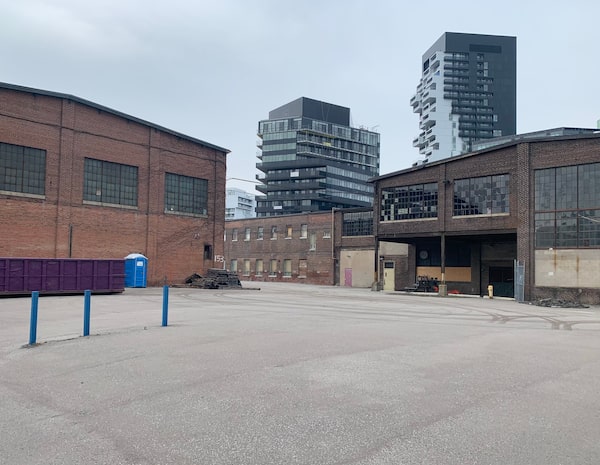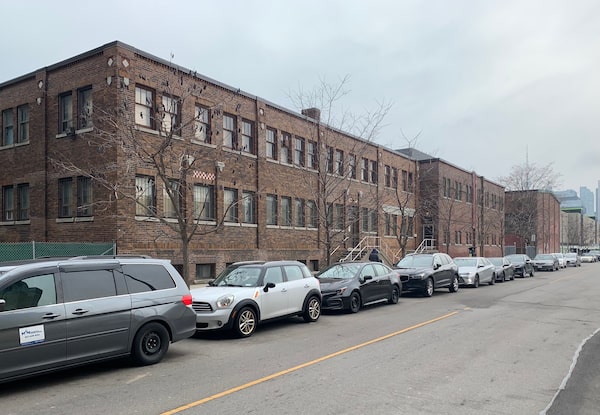
The former Dominion Wheel & Foundries Ltd. buildings on Eastern Avenue in Toronto on Jan. 15, 2021.Alex Bozikovic/The Globe and Mail
Doug Ford is sending in the wreckers.
A demolition crew showed up this week at an old industrial complex on Eastern Avenue, just east of Toronto’s downtown core. Local residents’ associations and the city councillor, Kristyn Wong-Tam, were outraged.
They’re mostly right to be. While the situation is more complicated than it seems, this apparent demolition is wrong and unnecessary. Mr. Ford is bringing a sledgehammer to do a subtle job. And that’s bad news for an important cause: the intensification of our cities.
The site in question is a provincially owned lot that contains four industrial buildings, the onetime home of Dominion Wheel and Foundries. A master plan for this West Don Lands area had preserved it for unspecified uses, but the Ford government imposed a ministerial zoning order last fall to override any city planning on the site. Now they plan to redevelop it with three high-rise housing towers.
That move was widely decried as anti-democratic. But it had seemed to me a rare case of the Ford government getting something right – until now.
“This is home to the largest concentration of heritage buildings in the neighbourhood,” Ms. Wong-Tam says. She is calling for the demolition work to stop. “The province is showing absolute disregard of its own heritage policies.”

The West Don Lands plan has partly squandered a huge opportunity for the core to grow.Alex Bozikovic/The Globe and Mail
It’s important to separate the what and the how. The province’s goal of putting some tall buildings on this site is reasonable. The city badly needs to add more housing, particularly downtown. And in the five years since the West Don Lands first opened, it’s become clear that the area is too thinly populated. It’s more than half done, yet often feels like a ghost town.
Its carefully planned mid-rise buildings and wide streets don’t deliver much population density – about 6,000 homes on 80 acres. To put it into the context of Europe (as many in the planning world like to do), this is equivalent to a fragment of central Paris. But it’s an isolated fragment, lined on three sides by rail tracks, houses and the Don River. It doesn’t work as intended.
Meanwhile, in 2019, Toronto delivered its own plan, TOCore, reimagining downtown as a dramatically denser place. In this respect, the West Don Lands plan has partly squandered a huge opportunity for the core to grow.
If this Conservative government really wants to deliver more housing, as it claims, it should take aim at the regressive policies that stop growth in Toronto’s comfortable neighbourhoods. The fast-growing city must welcome a lot more people, and local policy makes that much too hard. This government, with its near-total indifference to Toronto voters, could save Toronto from itself.
Instead, Queen’s Park is reinforcing a false old story – that new development needs to destroy heritage. It does not. The foundry buildings occupy a large site. There is room to add much density and still conserve much of these structures.

Ms. Wong-Tam and two local residents’ groups want some of the buildings preserved as a cultural centre.Alex Bozikovic/The Globe and Mail
The province’s scorched-earth approach “is a very old fashioned way of doing things,” says architect and preservationist Catherine Nasmith. “We haven’t done that since the sixties. Now, we try to save what we can – and that takes many different forms.”
Queen’s Park doesn’t have the nerve to openly admit what it is doing. A Housing Ministry spokesperson gave me some non-answers about the current work. “Heritage elements” will “inform the design of any new elements on the site,” the spokesperson said.
That’s insufficient – and total demolition would destroy some elements of cultural and financial value. The two great foundry sheds on the south and west edges of the site, in particular, have remarkable potential.
Ms. Wong-Tam and two local residents’ groups want some of the buildings preserved as a cultural centre, including a music venue. This is certainly doable while adding large amounts of density. The site has enough open space to slide in at least two towers without demolishing much.
But that would take subtlety. It would take more time. It would probably cost more money. The Ford government is – it seems – aiming for cheap and fast and easy. That’s not how you build a good city.
Our Morning Update and Evening Update newsletters are written by Globe editors, giving you a concise summary of the day’s most important headlines. Sign up today.
 Alex Bozikovic
Alex Bozikovic